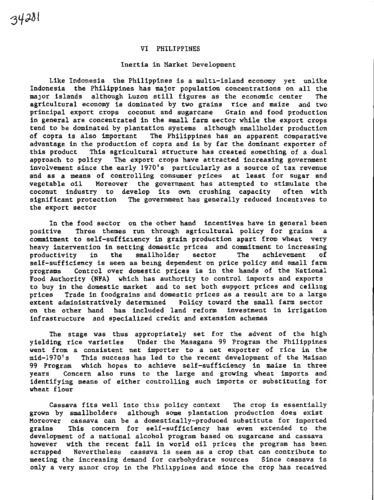Philippines: Inertia in market development
Abstract
Although the Philippines was the 1st Asian country to receive cassava from the New World via the Spanish in the 17th century, at present it is only a minor crop, grown essentially by smallholders who obtain very low yields (4-5 t/ha). There has been little government support although the crop fits well into efforts to obtain self-sufficiency. The major producing areas are the Visayas region and Mindinao. Data are provided on production trends and distribution, yields, production systems, production costs, and labor utilization. In general, production incentives are weak due to poorly developed markets for cassava, leading to extensive production systems and low yields. The principal existing alternative market is for starch production although this requires a constant supply of raw material. The composite flour market also offers a potential provided the price for cassava chips be reduced. The study concludes that the future of cassava depends on capturing a share of the growing animal feed market. (CIAT)

